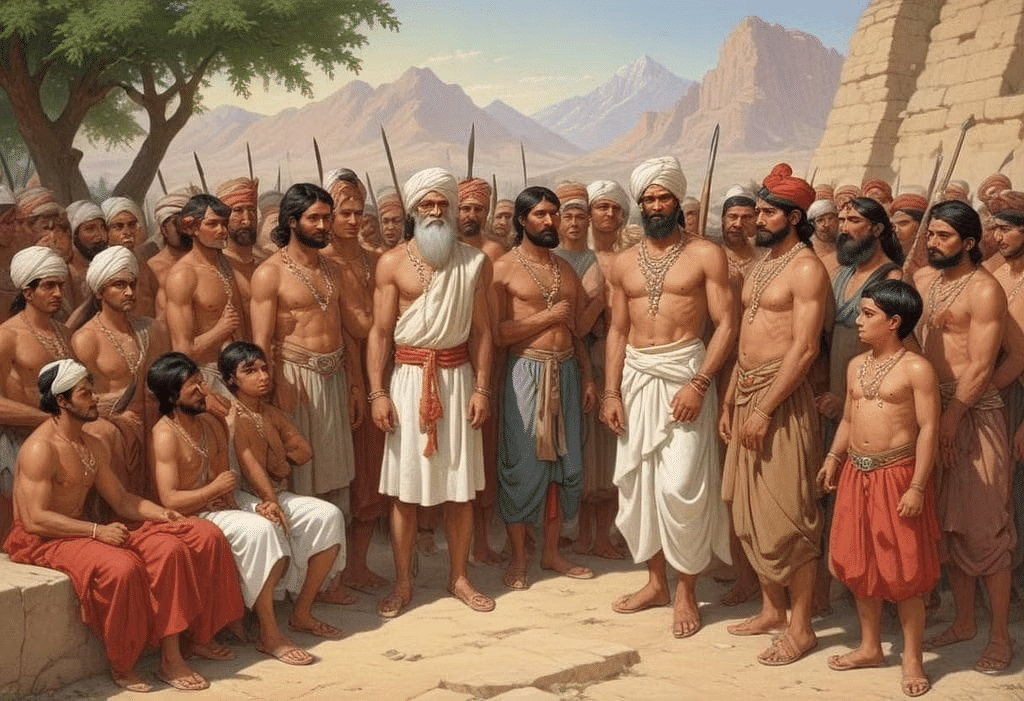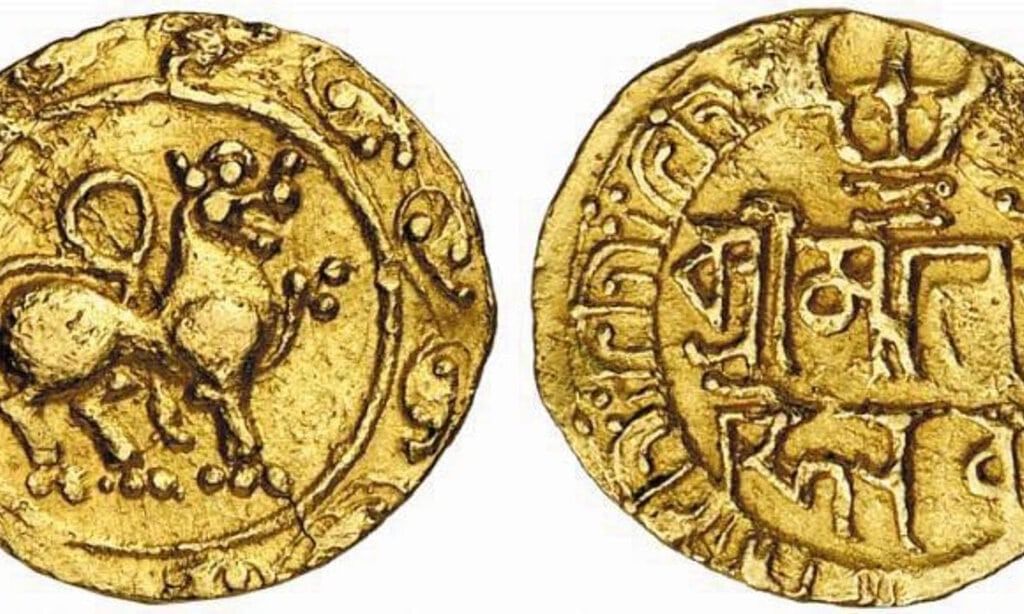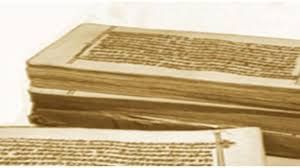Overview: The Vedic Period | General Test Preparation for CUET UG - CUET Commerce PDF Download
The Vedic Period (or Vedic Age) (1500 – 500 B.C.E.) was the period in Indian history when the Vedas, Hinduism's earliest holy books, were being written. Scholars situate the Vedic period between the second and first millennia BCE, with the period lasting until the sixth century BCE, based on literary evidence. The linked culture, known as Vedic civilization, was focused in the Indian subcontinent's northern and northwest regions.
 Vedic Period
Vedic Period
- The disputed Aryan invasion idea is connected to figuring out when the Vedic era began.
- According to this theory, Dravidians might have constructed the Indus Valley or Harappan civilization in North India.
- By 1500 B.C., the Harappan Culture cities had started to decline, leading to a gradual deterioration of their economic and administrative systems.
- Around this period, individuals speaking the Indo-Aryan language Sanskrit migrated to northwestern India from the Indo-Iranian region.
- Initially arriving in small groups through the northern highlands passages, their initial settlements were in the Northwest lowlands and the Punjab plains.
- Primarily a cattle-keeping tribe, they were mainly searching for pastures.
- By the 6th century B.C., they had conquered the entirety of North India, known as Aryavarta.
- This era can be divided into two parts: the Early Vedic Period or Rig Vedic Period (1500 B.C - 1000 B.C) and the Later Vedic Period (1000 B.C - 600 B.C).
Origin of Aryans

- There are different ideas about where the Aryans came from.
- Some say they might have started in the Arctic, Germany, Central Asia, or southern Russia.
- Astronomical studies suggest the Aryans could have come from the Arctic, as per Bal Gangadhar Tilak.
- However, most historians think they likely originated in southern Russia.
- They then moved across Asia and Europe.
- Around 1500 B.C., they reached India and were called Indo-Aryans.
- They used Sanskrit, which is an Indo-Aryan language..
Vedic Period - Historical Reconstruction
- The oldest Vedic book that remains is the Rigveda, showing similarities in language and content with Indo-Iranian traditions not seen in other Vedic texts. It likely took many years to develop, mostly finishing by 1000 B.C.E.
- During the time of mantras, there were various texts like the Atharvaveda, Rigveda Khilani, Samaveda Samhita, and Yajurveda mantras. These texts, although influenced by the Rigveda, underwent changes due to linguistic evolution and reinterpretation.
- The period of Samhita prose marks the start of organizing Vedic texts. A notable change was the removal of certain linguistic elements. This era involved the Brahmanas, Aranyakas, early Upanishads, and Srauta Sutras.
- The Sutra language represents the newest form of Vedic Sanskrit, originating around 500 B.C.E. It includes a significant portion of the Srauta and Grhya Sutras, and some Upanishads.
- Epic and Paninian Sanskrit, seen in texts like the Mahabharata and Ramayana, emerged after 500 B.C.E., considered post-Vedic. Historical records from the Vedic era are scarce until the end of that period, giving way to changes in language, culture, and politics that marked the decline of Vedic India.
Rigvedic period (1500–1000 BCE)
- During the time of the Rig Vedic period, the Aryans mostly stayed around the Indus region.
- The Rig Veda talks about Saptasindhu, representing a land of seven rivers.
- These rivers include Jhelum, Chenab, Ravi, Beas, and Sutlej in Punjab, along with Indus and Saraswathi in India.
- The Rigvedic hymns were composed in the Early Vedic period, estimated to be between 1500 and 1000 BC.
- The later Vedic era spans from 1000 to 600 BC.
- The RigVedic Aryans share similarities with the Andronovo culture, the Mittani kingdoms, and early Iranians.
- The Andronovo culture is linked to the introduction of the first horse-drawn chariots.
Rig Vedic Period - Political Organisation

- The kula, known as the family, served as the main political unit.
- Several families joined together to create a community called a grama based on family ties.
- The leader of a grama was called a gramani.
- A Visu was a larger entity consisting of many towns, led by a Vishayapati.
- The highest political group was the Jana, meaning tribe.
- During the Rig Vedic period, various tribal kingdoms such as the Bharatas, Matsyas, Yadus, and Purus existed.
- The nation was governed by a rajan, or king, with leadership passing down through the family.
- The king received support in governing from a purohita, or priest, and a senani, or army commander.
- The Sabha and the Samiti were both respected institutions.
- The Sabha seems to be a council of elders, while the Samiti is a gathering of the entire populace.
Rig Vedic Period - Social Life

- The Rig Vedic civilization was led by men. The family, known as graham, was the main social group.
- The family head was called grahapathi.
- While being faithful to one partner was common, kings and nobles often had multiple spouses.
- Women managed households and played essential roles in ceremonies.
- Women had equal chances for spiritual and mental growth as men.
- Female poets like Apala, Viswavara, Ghosa, and Lopamudra were notable in the Rig Vedic period.
- Women could participate in public gatherings. Child marriages and sati were absent.
- Both genders wore cotton and woolen clothes.
- Men and women adorned themselves with various accessories. The main foods included wheat, barley, milk, curd, ghee, vegetables, and fruits.
Rig Vedic Period - Economic Condition
- The Rig Vedic Aryans were a nomadic group who primarily relied on livestock for their income.
- Their wealth was determined by the number of animals they owned.
- Once they settled in North India, they gradually started cultivating crops.
- They used iron tools effectively to clear forests and convert new land into farmland.
- Carpentry was a common occupation for them, thanks to the abundance of wood from the cleared forests.
- Carpenters crafted chariots and ploughs, while metalworkers fashioned various items from copper, bronze, and iron.
- Spinning was another important activity, producing both cotton and woolen fabrics.
- Goldsmiths specialized in creating jewelry and ornaments.
- Initially, trade was based on bartering goods, but later on, large transactions involved the use of gold coins called nishka.
Rig Vedic Period - Religion

- The ancient Aryans from the Rig Veda respected and admired natural elements such as the earth, fire, wind, rain, and thunder.
- They formed deities from these forces of nature and offered them reverence.
- Among the gods mentioned in the Rig Veda were Prithvi (Earth), Agni (Fire), Vayu (Wind), Varuna (Rain), and Indra (Thunder).
- Indra stood out as the most favored god during the early Vedic era.
- Following Indra in significance was Agni, who was considered a link between humans and the divine.
- Varuna was established to uphold the natural balance. Aditi and Ushas were among the female deities revered.
- Temples and idol worship were absent in the initial Vedic period.
Worship of Rigvedic Aryans
- The ancient Aryans in the Rig Veda worshipped natural forces, believing in the unity of nature.
- They prayed to multiple gods not to scare nature but to win her kindness.
- They believed that gods controlled natural elements like the sky, thunder, rain, and air, while disasters were seen as their anger.
- The Rig-Veda songs were mainly sung to honor and satisfy the gods.
- Natural occurrences were seen as the spiritual forms of many gods.
- Deities like Varuna, Indra, Mitra, and Dyus were respected for their influence over different aspects of the sky.
Later Vedic Period (1000 BC – 600BC)
- The Aryans moved further east in the Later Vedic Period.
- The Satapatha Brahmana talks about Aryans spreading to the eastern Gangetic plains.
- During this time, big kingdoms started to grow.
- Later Vedic texts mention three parts of India: Aryavarta (north), Madhyadesa (middle region), and Dakshinapatha (south).
- Two new collections were written: the Yajur Veda Samhita and the Atharva Veda Samhita.
- The Yajur Veda hymns are connected to ceremonies showing the society's structure.
Later Vedic Period - Political Organization
- Larger kingdoms emerged during the later Vedic era.
- Many clans joined to form larger territories in the later Vedic era.
- With kingdom growth, royal authority also grew. Monarchs performed various rituals like Rajasuya, Asvamedha, and Vajpeya to enhance their status.
- Monarchs were given titles like Rajavisvajanan, Ahilabhuvanapathi, Ekrat, and Samrat.
- Alongside the purohita, senani, and gramani, many other officials helped in administration during this period.
Later Vedic Period - Economic Condition

- During this historical period, iron was widely used, allowing humanity to clear forests and farm new territory.
- Agriculture was the principal source of income. Improved cultivation equipment was used in farming.
- Rice and wheat were grown alongside barley. Another advantage was understanding manure.
- Specialisation expanded as industrial activity got more diversified. Metalwork, leatherwork, woodwork, and ceramics all saw important advancements.
- Foreign trade increased with domestic trade.
- The Later Vedic people were seafarers who dealt with areas such as Babylon. There arose a class of hereditary merchants (vaniya).
- Vaisyas was a dealer and merchant as well. They joined forces to create ganas, or guilds.
Later Vedic Period - Social Life
- The society in ancient times had four main groups: Brahmins, Kshatriyas, Vaisyas, and Sudras.
- These groups were established in the Later Vedic period. Among them, the Brahmins and Kshatriyas were usually in better positions compared to the Vaisyas and Sudras.
- A person from the Brahmin group was typically considered higher in status than someone from the Kshatriya group. However, Kshatriyas sometimes tried to show that they were more important than Brahmins.
- During that time, various sub-groups based on people's professions started to emerge.
- Within families, the authority of the father became more pronounced in the Later Vedic era. Unfortunately, the situation for women did not get better. They were still viewed as inferior to men and were expected to be obedient.
- Women's rights in politics, like being part of decision-making gatherings, were restricted. Additionally, early marriages for children were becoming increasingly common.
Varna system in Later Vedic period
- Varna, or colour, was originally used to distinguish between Vedic and non-Vedic people.
- Varnas were birth-based rather than profession-based in the later Vedic period.
- According to the 10th mandala of the Rigveda, known as 'purush sukta,' the varnas are formed from different portions of the God's body, such as Brahmin from the mouth, Kshatriya from the arms, Vaishya from the thighs, and Shudra from the feet.

- Brahmins were highly respected for their wisdom and teachings, guiding all sections of society.
- Priests, teachers, sages, educators, and intellectuals were part of the Brahmin community.
- Kshatriyas were the warrior class, including kings, rulers, and administrators.
- Skills like warfare, governance, moral conduct, justice, and leadership were crucial for Kshatriyas.
- All Kshatriyas were educated in Brahmin ashrams from a young age to learn essential knowledge.
- Vaishyas were farmers, traders, and businessmen in society.
- Vaishyas, like Kshatriyas, were also educated in Brahmin ashrams to learn moral values.
- Shudras, the fourth Varna, were essential for the economy with their diligent work.
- There are varying scholarly perspectives on the behavior and role of Shudras.
Later Vedic Period - Religion

- Early Vedic deities like Indra and Agni were no longer as important.
- In the Later Vedic period, Prajapathi (the creator), Vishnu (the protector), and Rudra (the destroyer) gained significance.
- Sacrifices continued to hold value, with ceremonies becoming more intricate.
- While sacrifices grew in importance, prayers became less crucial. The role of priests turned into a hereditary profession.
- The priestly class developed and improved rituals for sacrifices.
- By the end of this era, there was a notable resistance against the authority of priests, as well as the ceremonies and sacrifices they performed.
- The elaborate rituals had a notable influence on the emergence of Buddhism and Jainism.
Vedic Literature

- Veda comes from vid, meaning to know. It signifies supreme intelligence.
- Vedic scriptures consist of four main Vedas: Rig, Yajur, Sama, and Atharva.
- Alongside the Vedas, there are other revered texts like the Brahmanas, Upanishads, Aranyakas, and the epics Ramayana and Mahabharata.
- The Brahmanas are guides on prayer and ritualistic offerings.
- Upanishads are philosophical writings exploring topics such as the soul, the absolute, the universe's creation, and natural mysteries.
- The Aranyakas, known as forest texts, delve into mysticism, ceremonies, and sacred offerings.
- Valmiki authored the Ramayana, while Vedavyas wrote the Mahabharata.
Rigveda
- The Rigveda is seen as the earliest Vedic Sanskrit writings, created between 1800 and 1100 BCE.
- The Rigveda, also known as the 'Veda of Verses,' is the oldest collection, containing over 1000 hymns devoted to various gods. It was primarily organized to serve the needs of priestly families who safeguarded sacred texts.
- Rigveda literally translates to "verses of understanding."
- It comprises 1028 hymns structured into ten volumes referred to as "mandalas."
- It is recognized as the "First Testament" of humanity and was composed approximately around 1700 BC.
- The newest hymns within the collection were written between 1500 and 1200 BC and represent contributions from various priestly families.
Yajurveda
- The Yajur Veda was created around the same time as the Samaveda, from 1100 to 800 BCE.
- Yajurveda is a book of prayers for sacrifices, where "Yajus" means "sacrificial formula."
- It contains the rituals for Yajnas and was likely written between 1400 and 1000 BC.
- Yajurveda holds the earliest written Indo-European literature in the world.
- There are two versions of the Yajurveda.
- Initially, ritual instructions are intertwined with texts from the Rig-Veda.
Samaveda
- The Samaveda was composed between 1200-800 BCE.
- Saman means "melody," and the Samaveda is a collection of rhythmic hymns from the Rigveda.
- In terms of sacredness and ceremonial importance, it is similar to the Rigveda.
- It contains 1549 songs intended to be sung by a specific group of Brahmans called "Udgatris" during the soma ritual.
- Because it focuses on songs, it is referred to as the "Veda of Melodies."
Atharvaveda
- Between 1000 and 800 BCE, the Atharveda was composed.
- The Atharva-Veda is different from the other three Vedas and is listed fourth in order of time.
- It is interesting since it shows common beliefs and superstitions of the general public.
- The Atharvaveda includes spells and incorporates early healing and magical practices found in other Indo-European writings.
- For a while, it was not recognized as part of the Vedas.
- Atharvan, a legendary Rishi, is honored with creating the Atharvaveda and introducing the yagna, or fire sacrifice.
Role of women during Vedic Period

- The ancient society described in the Rig Veda was a society where people had freedom.
- The Aryans back then preferred having sons more than daughters.
- Girls, however, enjoyed the same freedom as boys did.
- Both boys and girls could learn.
- Girls were able to study the Vedas and arts.
- Women in those times did not have to cover themselves from others and could choose their own company.
- They had a lot of freedom in their homes and were seen as equal partners in the household.
- Men and women were considered to be equally important in social and religious activities.
- In later times, families started to follow a system where the father had more authority, which led to women having a lower status.
- While a few women took part in intellectual discussions and some queens were involved in ceremonies, women were generally seen as less important and submissive to men.
- Some ancient texts talk about practices like Sati and child marriages.
- In one of these texts, the Aitareya Brahmana, having a daughter was thought to bring sorrow.
Conclusion
After the decline of the Harappan civilization, a new group of people emerged in the northern part of India. The Rigveda represents one of the earliest writings of these people, followed by numerous others in the subsequent period. During the Later Vedic Period, the Aryans migrated towards the east. The Aryans eventually reached the eastern Gangetic plains, as mentioned in the Satapatha Brahmana.
|
164 videos|800 docs|1156 tests
|
FAQs on Overview: The Vedic Period - General Test Preparation for CUET UG - CUET Commerce
| 1. What is the origin of Aryans according to historical reconstruction during the Vedic Period? |  |
| 2. What is the significance of the Vedic Period in Indian history? |  |
| 3. How was the political organization during the Later Vedic Period? |  |
| 4. What are some key features of the Vedic Period that shaped ancient Indian society? |  |
| 5. How did the Aryans contribute to the cultural and religious development of ancient India during the Vedic Period? |  |






















